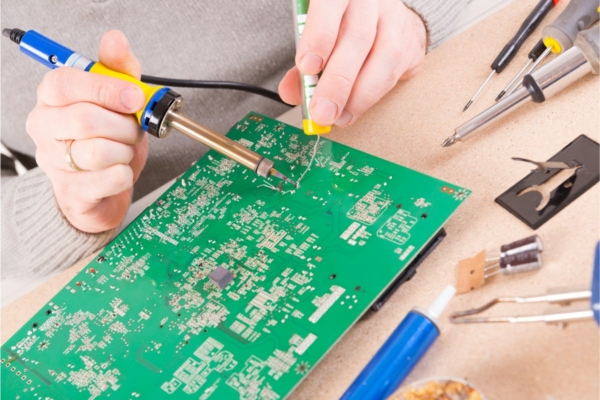What is Solder Ball
A solder ball is the small spherical blobs of solder that form during the soldering process. They can be found on the surface of printed circuit boards (PCBs) and are considered defects in PCB manufacturing. These solder balls can cause various issues, including short circuits between adjacent pads or pins, leading to electrical failures. They can also interfere with the reliability and performance of the PCB by affecting the proper functioning of components.
Solder balls typically form when solder gets squeezed underneath the inside of a pad during the reflow process, separating from the main mass and forming its own solder ball. They are commonly found on the side of chip components and around the pins of connectors and integrated circuits (ICs). Factors such as excess humidity, dampness or moisture on the PCB, excessive flux, high temperature or pressure during reflow, insufficient cleaning, and inadequately prepared solder paste can contribute to the occurrence of solder balls.
Controlling solder balls is crucial for ensuring the quality and performance of PCBs. Manufacturers need to carefully monitor the soldering process and take steps to minimize their formation. This may involve optimizing the reflow profile, adjusting the stencil design, or implementing other techniques to ensure proper solder distribution and prevent the formation of solder balls. By addressing and preventing solder ball defects, the reliability and functionality of the PCB can be maintained.
Frequently Asked Questions
What Causes Solder Balls on PCB
Solder balls on PCBs occur due to the gassing and spitting of the flux on the wave’s surface or when the solder bounces back from the wave. These issues arise from excessive backflow in air or a significant drop in nitrogen environments.
Why Solder Balls After Reflow
In most cases, the presence of solder balls after reflow can be attributed to an inappropriate reflow ramp rate. If the assembly is heated up too quickly, the volatiles in the paste will not have enough time to evaporate before the paste becomes molten. This combination of volatiles and molten solder can lead to the formation of solder spatter (balls) and flux spatter.
What Is the Shelf Life of Solder Balls
Even with proper storage, solder balls will eventually be exposed to air and undergo oxidation. As the oxide layer thickens, soldering becomes more challenging. Although the rate of oxidation is gradual, the solder balls should remain usable for a minimum of two years. However, their usability may be compromised after this period.
What Material Is Used in Solder Ball
After extensive testing and discussions, the semiconductor industry has predominantly adopted the use of a specific alloy known as SAC (Tin, Silver, Copper) for lead-free product assembly. However, there is still ongoing debate regarding the specific type of SAC alloy to be used.
Why Is My Solder Not Melting PCB
If you are using an incorrect flux or an inadequate amount, it can prevent the solder from melting properly. It is important to apply just enough flux to wet the seams and facilitate the melting and flow of the solder. Ensure that the flux you use is strong enough to remove any dirt or oxides without damaging the stained glass.
What Is the Purpose of a Solder Ball
In the realm of integrated circuit packaging, a solder ball, also known as a solder bump, serves the purpose of establishing contact between the chip package and the printed circuit board, as well as between stacked packages in multichip modules. This allows for efficient transmission of electrical signals and facilitates the overall functionality of the electronic device.
What Is the Difference Between Solder Balls and Solder Bumps
The solder bumps, also known as small spheres of solder balls, are bonded to contact areas or pads of semiconductor devices or circuit boards. They are used for face-down bonding and can be placed manually or by automated equipment, being held in place with a tacky flux.
What Are the Effects of Solder Balls
Solder balls, being conductive materials, have the potential to cause electrical shorts when they move on a printed circuit board. This can have a negative impact on the overall reliability of the board.
What Are Solder Balls Used For
A solder ball serves the purpose of connecting chip packages to PCBs. These spherical pieces of soldering are formed through sequential flow/quench or reflow processes. Once these processes are completed, the solder balls undergo degreasing and classification.





